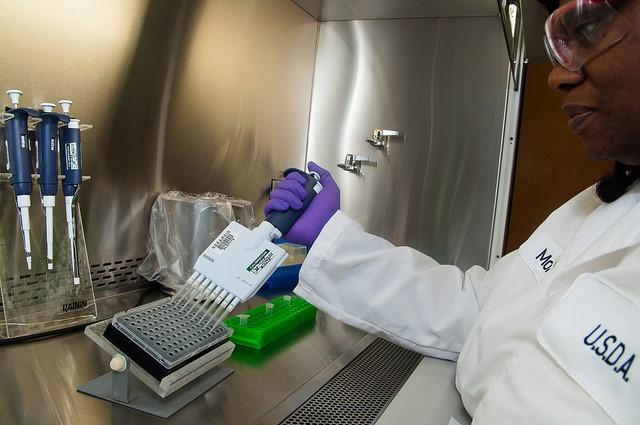Though the incidence of foodborne illnesses has held steady over the past several years, a surveillance system geared toward tracking the diseases found that those involving Escherichia coli O157 and certain Salmonella subtypes have been falling over the past decade, which experts say parallels decreased contamination in poultry and ground beef.
Infections involving some Salmonella subtypes, however, are on the rise, with some of them from nonfood sources, such as contact with animals.
A team from the US Centers for Disease Control and Prevention (CDC) and partners in 10 states that are part of the FoodNet surveillance network reported its findings today in the latest issue of Morbidity and Mortality Weekly Report (MMWR).
Highest rates: Campylobacter, Salmonella, Shigella
The group publishes an annual FoodNet report in early spring, and this year's report sums up lab-confirmed infections from nine pathogens for 2017, detailing changes since 2006. The pathogens are Campylobacter, Cryptosporidium, Cyclospora, Listeria, Salmonella, Shiga toxin-producing E coli (STEC), Shigella, Vibrio, and Yersinia.
For 2017, the FoodNet system identified 24,484 foodborne illnesses, 5,677 hospitalizations, and 122 deaths. Highest incidences per 100,000 population were for Campylobacter, Salmonella, and Shigella.
Growing use of culture-independent diagnostic tests (CIDTs) at public health labs is a useful tool for quickly identifying illnesses that might be missed by other lab tests, leading to more accurate incidence estimates, the authors write. They note, however, that their use can complicate the interpretation of estimates and that culturing isolates is still needed to reveal subtype information and test for antimicrobial susceptibility.
Regarding the infections only found on CIDT testing, percentages were highest for Yersinia (51%), Campylobacter (36%), Shigella (31%), Vibrio (29%), STEC (27%), Salmonella (9%), and Listeria (1%). Compared with findings from 2014 to 2016, incidence for 2017 was significantly higher for Cyclospora, Yersinia, Vibrio, STEC, Listeria, and Campylobacter.
Given that the use of CIDT panels are rising, tests more often routinely detect Cyclospora, Yersinia, Vibrio, and non-O157 STEC, the group said. "The increased incidence of these infections in 2017 was most likely driven by the increased use of CIDTs," they wrote.
Of subtyped Salmonella isolates in 2017, the five most common were Enteritidis, Typhimurium, Newport, Javiana, and I 4,[5],12:i:-, a variant of Typhimurium. For 2017, the incidence of Heidelberg was 65% lower than from 2006 to 2008, with a similar decrease for Typhimurium over the same period.
When the scientists looked at STEC isolates, they found that the incidence of non-O157 STEC increased significantly in 2017 compared with 2014 to 2016. Though O157 STEC held steady, the incidence decreased 35% compared with 2006 to 2008.
Impact of interventions, exposure risks
In summing up their findings, the group said the declines in Salmonella Typhimurium and Heidelberg mirror decreases in positive samples in broiler chickens, especially for Salmonella Heidelberg. They added that the drops might partly be the result of poultry vaccination against the serotypes and the implementation of US Department of Agriculture (USDA) measures to decrease Salmonella in poultry and beef.
The decreases, though, haven't driven down the overall Salmonella level over the last few years, because illnesses from other serotypes have increased, especially Javiana, Thompson, and Infantis, which have risen about 50% over the past decade. As with other serotypes, some of the rise is likely due to nonfood exposure. The authors added that the USDA has seen a more than 50% increase rise in broiler samples that have tested positive for the Infantis serotype since 2006.
Regarding STEC, the decreasing availability of serogroup information because of more frequent use of CIDT makes it difficult to tease out trends, the group wrote. The researchers said, however, that the decreased incidence of hemolytic uremic syndrome—a potentially fatal kidney complication mainly cause by O157—declined from 2006 to 2016. Also, they noted that the decline mirrors an STEC O157 decline in ground beef over the same timeframe.
See also:
Mar 23 MMWR report
Apr 20, 2017, CIDRAP News story "Salmonella, Campylobacter top foodborne culprits in 2016"

















